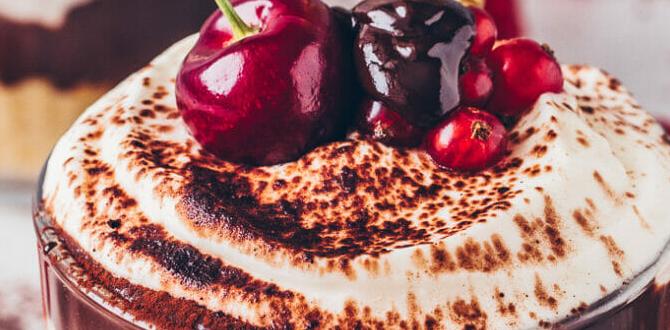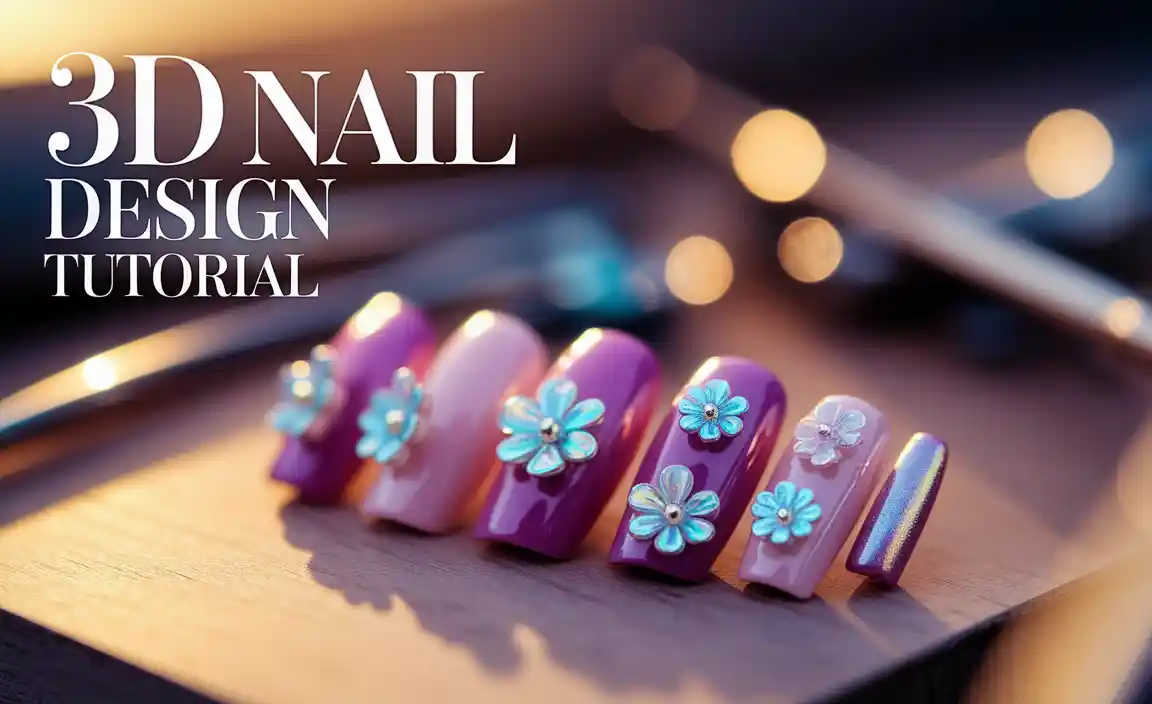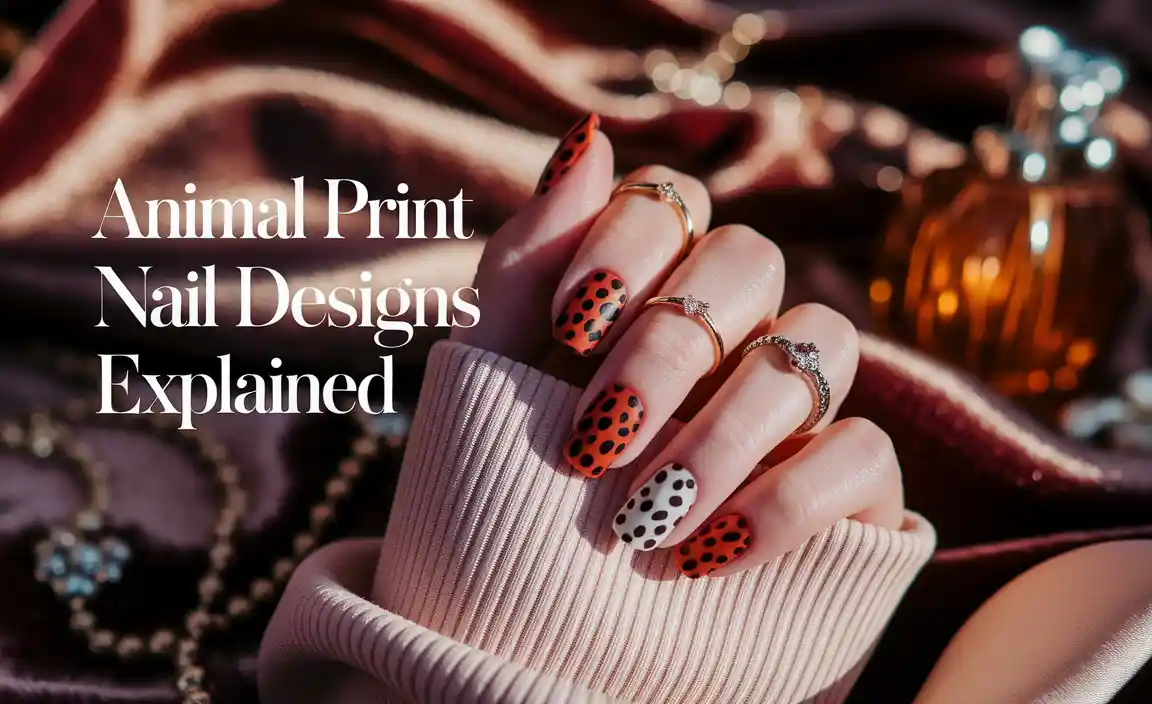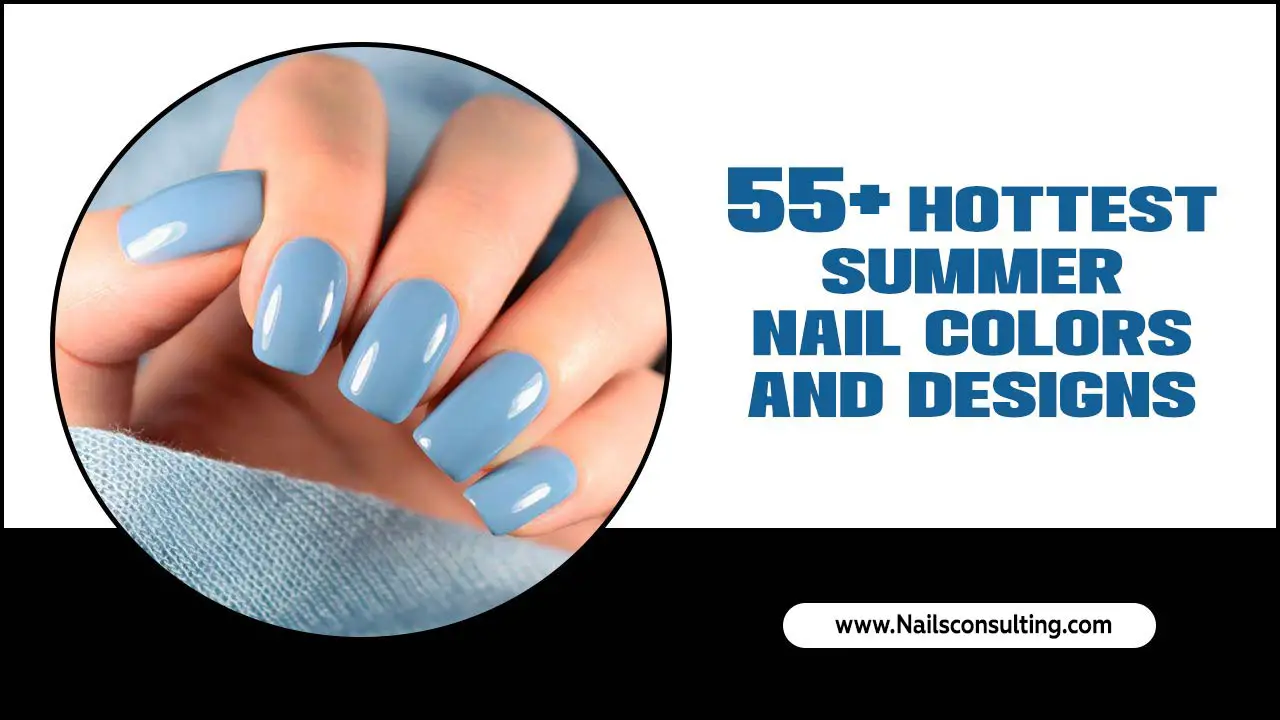Floral hand-painted nail art designs are a beautiful and achievable way to express your style. With a few simple tools and techniques, you can create stunning floral patterns right at home, adding a touch of elegance and personality to your manicure.
Hello, lovely nail enthusiasts! Ever scroll through gorgeous nail art pictures and think, “Wow, I wish I could do that”? I totally get it! Sometimes, beautiful designs can seem super complicated. But guess what? You absolutely can create delicate floral hand-painted nail art. It’s a fantastic way to make your nails pop and show off your creative side.
Don’t worry if you’re a total beginner. We’re going to break it all down into easy steps. You’ll learn exactly what you need and how to use it to get those blooming beauties on your fingertips. Ready to unleash your inner artist and give your nails a floral makeover? Let’s get started!
<h2>Why Floral Hand-Painted Nail Art is Blossom-ingly Beautiful</h2>
Floral hand-painted nail art is more than just pretty; it’s a timeless trend that brings a touch of nature’s artistry to your fingertips. It’s a fantastic way to personalize your look, whether you’re feeling dainty and romantic or bold and vibrant. The beauty lies in its versatility – from simple, single blossoms to intricate floral arrangements, there’s a floral design for every mood and occasion. Plus, the satisfaction of creating it yourself is a whole other level of chic!
<h3>The Charm of DIY Florals</h3>
<p>Creating your own floral nail art means you’re not limited by what’s available in salons. You control the colors, the style, and the exact placement. Want a specific shade of periwinkle? You got it! Dreaming of tiny daisies scattered across your nails? Absolutely possible! This level of customization makes your manicure uniquely yours. It’s a wonderful form of self-expression that’s both fun and incredibly rewarding.</p>
<h2>Gathering Your Floral Nail Art Toolkit</h2>
<p>To create stunning floral hand-painted nail art, you don’t need a professional kit right away. We can start with some basic, easy-to-find items. Having the right tools makes a huge difference, turning a potentially messy attempt into a smooth, enjoyable creative process.</p>
<h3>Essential Nail Art Supplies</h3>
<ul>
<li><strong>Nail Polish Base Coat:</strong> Prepares your nails for polish and protects them. Essential for a long-lasting manicure.</li>
<li><strong>Nail Polish Colors:</strong> Choose your base color and the colors for your flowers and leaves. Acrylic paints can also be used, especially for finer details.</li>
<li><strong>Nail Art Brushes:</strong> This is key! You’ll want a few sizes. A thin liner brush is perfect for stems and details, while a slightly thicker, rounded brush can help create petals. A dotting tool is also super handy for creating flower centers or consistent dots.</li>
<li><strong>Top Coat:</strong> Seals your design and adds shine, protecting your beautiful artwork.</li>
<li><strong>Nail Polish Remover & Cotton Swabs:</strong> For cleaning up any little oopsies and perfecting your lines.</li>
<li><Strong>Optional: A clean-up brush (like a stiff, small angled brush):</Strong> This can be dipped in nail polish remover for precise cleanup around the cuticle and sidewalls.</li>
</ul>
<h3>Understanding Nail Art Brushes</h3>
<p>Let’s talk brushes! They’re your best friends in floral nail art. Don’t be intimidated by all the types out there. For beginners, focusing on a few key brushes is all you need.</p>
<table>
<thead>
<tr>
<th>Brush Type</th>
<th>Best For</th>
<th>Beginner Tip</th>
</tr>
</thead>
<tbody>
<tr>
<td>Liner Brush (Very Fine)</td>
<td>Delicate stems, thin vines, outlines, tiny details.</td>
<td>Dip lightly in polish or paint. Practice drawing straight lines and small curves.</td>
</tr>
<tr>
<td>Flat or Rounded Brush (Medium Size)</td>
<td>Creating petals, filling in shapes, simple dots.</td>
<td>Use the tip or side to pick up small amounts of color for petals. Practice making petal shapes.</td>
</tr>
<tr>
<td>Dotting Tool</td>
<td>Flower centers, consistent dots, small flower buds.</td>
<td>Dip the ball end in polish/paint. Roll gently onto the nail to make dots. You can use different sizes for different dot effects.</td>
</tr>
</tbody>
</table>
<p>You can often find beginner nail art brush kits online or at beauty supply stores that include a good starting selection. Sometimes, even a toothpick can be used as a makeshift dotting tool in a pinch! Remember to keep your brushes clean after each use by wiping them gently with nail polish remover on a lint-free wipe.</p>
<h2>Prepping Your Nails for Floral Perfection</h2>
<p>Just like any great artwork, a strong foundation is crucial. Properly prepped nails will ensure your hand-painted florals look fabulous and last longer. It’s a simple process that makes a big difference in the final result.</p>
<h3>Step-by-Step Nail Prep</h3>
<ol>
<li><strong>Clean & Remove Old Polish:</strong Get rid of any old nail polish. Use a good quality nail polish remover and a lint-free wipe for a clean slate.</li>
<li><strong>Shape Your Nails:</Strong> File your nails to your desired shape. Whether it’s round, square, or almond, a uniform shape helps your art look neat.</li>
<li><strong>Push Back Cuticles:</Strong> Gently push back your cuticles with an orange stick or a cuticle pusher. This creates a cleaner canvas for your design and prevents polish from clinging to the cuticle area.</li>
<li><strong>Buff (Optional but Recommended):</Strong> Lightly buff the surface of your nails. This smooths out any ridges and helps the base coat adhere better, leading to a more durable manicure. Don’t over-buff!</li>
<li><strong>Wash Hands:</Strong> Wash your hands to remove any dust from filing or buffing. Make sure your nails are completely dry after washing.</li>
</ol>
<p>Once your nails are prepped, it’s time to apply your base coat. A good base coat prevents staining (especially from darker polishes) and provides a smooth surface for your design. Let it dry completely before moving to the fun part!</p>
<h2>Simple Floral Hand-Painted Nail Art Designs for Beginners</h2>
<p>Ready to paint? We’ll start with a few super easy designs that will give you confidence and beautiful results. These methods are perfect for getting a feel for your brushes and polishes.</p>
<h3>Design 1: The Cherry Blossom Dot Flower</h3>
<p>This is a classic for a reason – it’s incredibly simple and always looks sweet.</p>
<ol>
<li><strong>Base Color:</strong> Apply a light, pastel color or a classic nude as your base. Let it dry fully.</li>
<li><strong>Petals:</strong> Using a medium-sized rounded brush or the tip of a liner brush, create small, connected dots in a circular pattern. Think of it like drawing tiny peas in a circle. Use a light pink, white, or coral polish for a delicate look.</li>
<li><strong>Center:</strong> Use a dotting tool or the very tip of your liner brush to place a tiny dot of yellow or a darker shade of your petal color in the center of the flower.</li>
<li><strong>Optional Stems/Leaves:</Strong> With a very fine liner brush, you can add tiny, thin lines for stems or small, curved lines for leaves in green or a complementary color.</li>
</ol>
<h3>Design 2: The Single Stroke Poppy/Rose Petal</h3>
<p>This technique uses one sweep of the brush to create a petal shape – surprisingly easy!</p>
<ol>
<li><strong>Base Color:</strong> Paint your nails with your chosen base color. Ensure it’s completely dry.</li>
<li><strong>Petals:</strong> Load a slightly damp, medium-sized brush (a flat or rounded tip works well) with a bright color like red or fuchsia. You can also use a mix of two colors by dabbing them onto the brush tip.</li>
<li><strong>The Stroke:</strong> Starting from a central point on your nail, press down with the brush and pull it outwards and slightly upwards in one smooth motion. Repeat this 3-5 times around the central point to form a flower shape. Each stroke forms a petal.</li>
<li><strong>Center:</strong> Add a dot of black or dark brown for the center using your dotting tool.</li>
</ol>
<p>Watching a quick video tutorial for the “single stroke flower” can be incredibly helpful to see the brush movement!</p>
<h3>Design 3: The Delicate Daisy</h3>
<p>Daies are cheerful and simple to replicate.</p>
<ol>
<li><strong>Base Color:</strong> A soft green or a pastel shade works beautifully. Let it dry completely.</li>
<li><strong>Flower Center:</strong> Use a medium-sized dotting tool to place a solid yellow dot where you want your daisy to be.</li>
<li><strong>Petals:</strong> Using a thin liner brush dipped in white polish, create simple teardrop shapes radiating outwards from the yellow center. You can make 4-6 petals around the dot. Try to keep them relatively consistent in size and shape.</li>
<li><strong>Optional Leaves:</Strong> Add small, elongated leaf shapes in green using your liner brush on either side of the flower.</li>
</ol>
<h2>Tips for Painting Perfect Petals and Leaves</h2>
<p>Mastering hand-painted florals is all about a few key techniques. Don’t get discouraged if your first few try aren’t perfect. Practice and patience are your best tools!</p>
<h3>Brush Control and Polish Consistency</h3>
<ul>
<li><strong>Less is More:</Strong> Load your brush with a small amount of polish or paint. It’s easier to add more than to remove excess.</li>
<li><Strong>Clean Brush, Clean Lines:</Strong> Wipe your brush on the rim of the polish bottle or a lint-free wipe to remove excess product before painting. This ensures finer, more controlled lines.</li>
<li><Strong>The Right Consistency:</Strong> Nail polish should be fluid but not watery. If it’s too thick, it’s hard to work with. If it’s too thin, it might spread too much. Acrylic paints, when used with a drop of water or acrylic medium, can offer a nice smooth consistency for detailed work.</li>
<li><Strong>Practice Strokes:</Strong> Before painting on your nail, practice drawing lines, dots, and petal shapes on a piece of paper or even a makeup wipe to get a feel for the pressure and movement needed.</li>
</ul>
<h3>Creating Petal and Leaf Shapes</h3>
<ul>
<li><strong>Petals:</Strong> For rounded petals, use the tip of your brush and gently press and release. For more pointed petals, use a light flicking motion. For single-stroke petals, as in the poppy design, practice the pressure and pull.</li>
<li><Strong>Leaves:</Strong> Simple leaf shapes can be made with a single stroke: start with the tip of your brush, press gently for the widest part of the leaf, and then taper off to a point. Or, create two fine lines that meet at a point.</li>
<li><Strong>Layering:</Strong> For more depth, you can layer colors. For example, paint a base petal shape and then add a slightly darker shade on top. Or, add a hint of white or lighter shade to the center of a colored petal.</li>
<li><Strong>Building Complexity:</Strong> Start with simple designs. As you get more comfortable, you can try adding more petals, different flower types, or even tiny buds and vines. Resources like nail art blogs or even Pinterest can offer endless inspiration. For advanced techniques, looking at resources on watercolor effects in nail art can be inspiring, though it requires more practice.</li>
</ul>
<h2>Bringing It All Together: The Top Coat Seal</h2>
<p>You’ve worked hard on your floral masterpiece, so let’s ensure it lasts and shines! The top coat is your final, crucial step.</p>
<h3>Applying the Top Coat</h3>
<ol>
<li><strong>Ensure Dryness:</Strong> Make sure your nail polish design is completely dry. If you try to apply top coat too soon, you can smudge your beautiful artwork.</li>
<li><strong>Generous Application:</Strong> Use a good quality, quick-drying top coat. Apply it in one smooth motion from the cuticle to the free edge of the nail.</li>
<li><strong>Cap the Edge:</Strong> For




